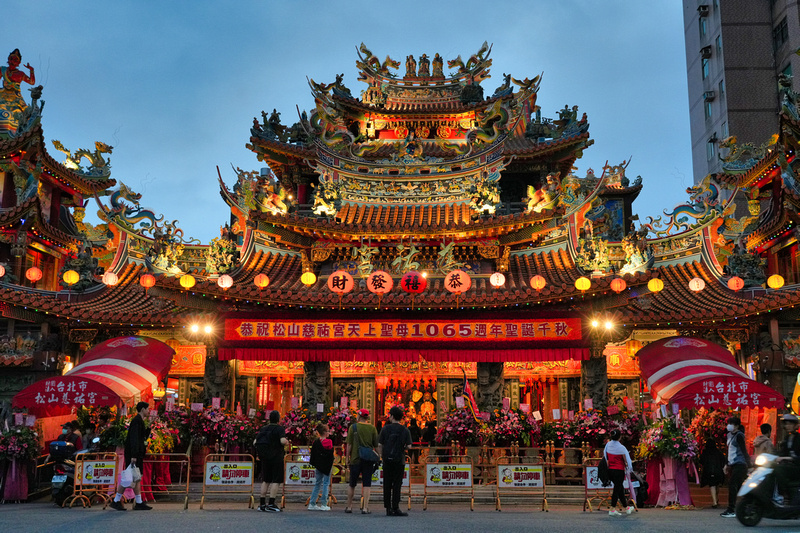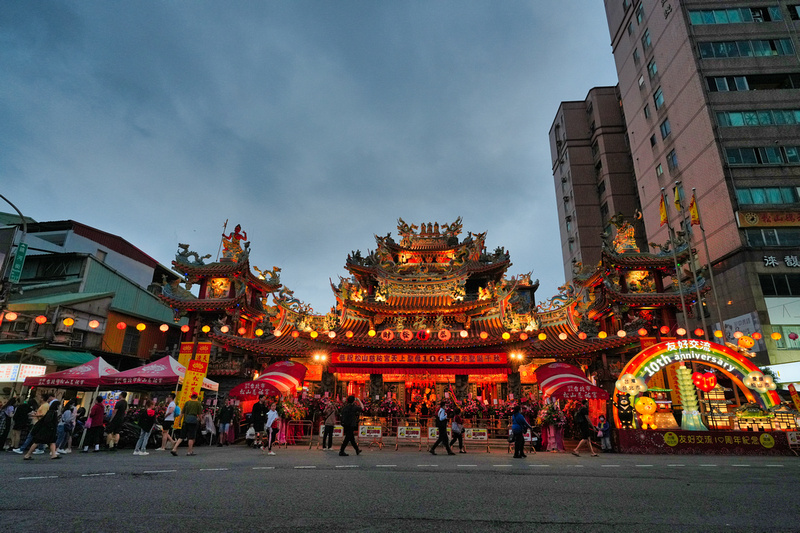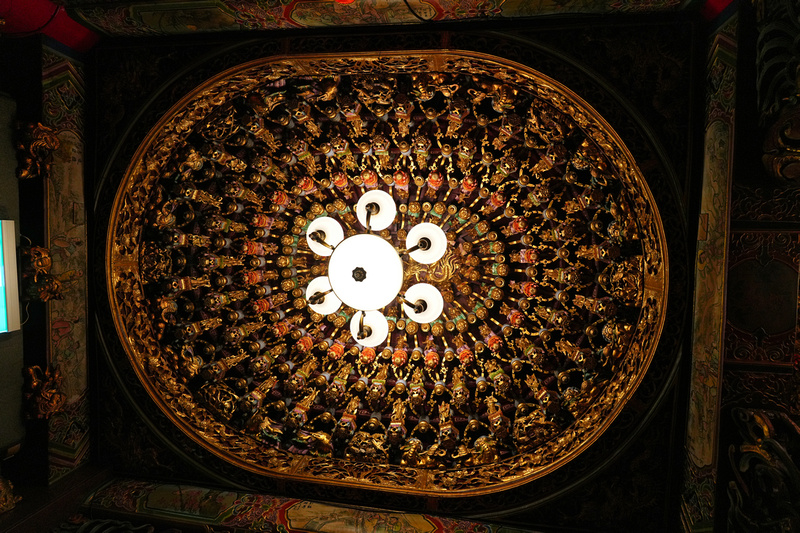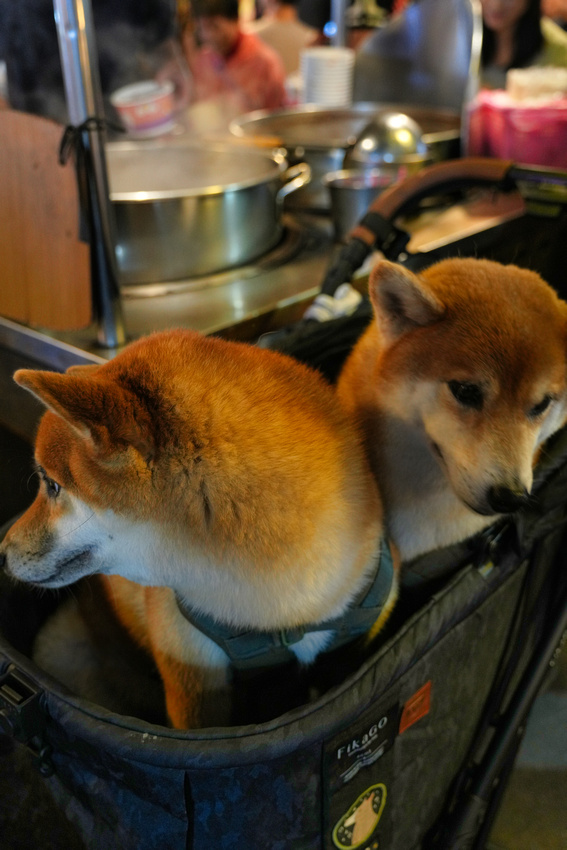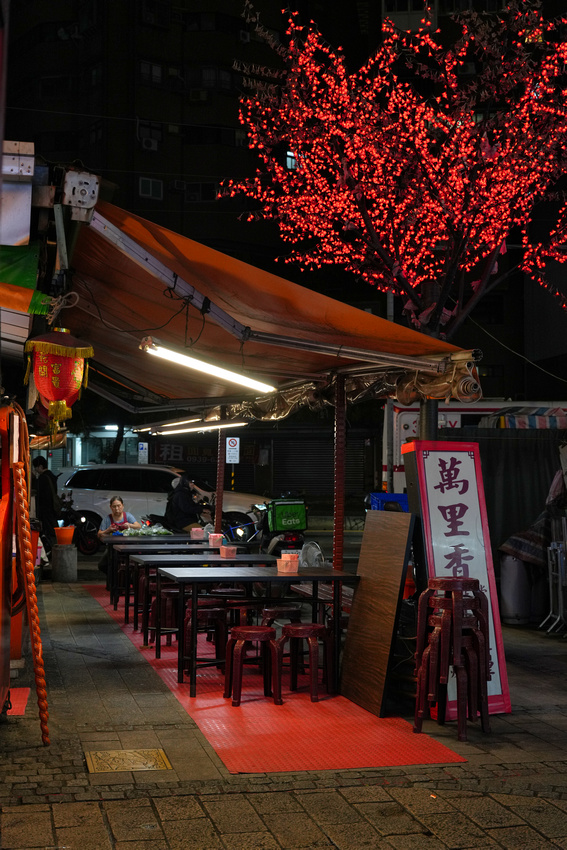RoaHe Night Street Market for Water H2O ThursdayLike many of the world’s warmer metropolises, Taipei comes alive at night. It’s when the often-oppressive temperatures recede that appetites emerge, and streets throughout the Taiwanese capital transform into humming markets ready to feed them. Locals and tourists compete for space as they wander through the tight corridors, scanning the seemingly endless line of light-strung food stalls for their next snack. Sausages pop over the grill while oyster omelets crackle on the griddle. The aromas of deep-fried mushrooms yield to those of sweet glutinous rice and pungent wafts of Taiwan’s renowned love-it-or-hate-it delicacy - stinky tofu. After an hour or two inside one of Taipei’s more popular night markets (and there are many), it’s not unusual to emerge exhausted, overstimulated, and achingly full.
The question for any traveler undoubtedly becomes which to hit, as — now more than ever — not all are created equal. For a first-timer looking for the all-round Taiwanese street food experience, Raohe is it. One of the city’s oldest night markets, it’s easily accessible by Taipei’s convenient and spotless mass rail system, and hosts what’s arguably the city’s most staggering variety of grilled, fried, steamed, torched, skewered, and candied dishes — including plenty with the much-venerated chewy, squidgy texture known here as "Q" (you’ll often spot the letter floating in a sea of Chinese characters on signs). Raohe has the added bonus of being located next to another Taipei institution — the stunning Ciyou Temple
With their roots in dynastic China, Taiwan’s night markets began sprouting up in the big cities near temples or other major intersections in the 1950s. The first markets to arrive in Taipei allowed Taiwanese migrants from the countryside to make a living by selling dishes and snacks from their hometowns. At their peak 10 or 20 years ago, dozens of individual night markets dotted the city, each its own amplified, neon-lit street fest swarmed with a mix of locals hunting for their favorite snacks and camera-toting tourists eager to explore Taiwanese culture through their stomachs. But there’s been a slow decline in the city’s night market scene since its heyday. Shilin, considered Taipei’s largest and most famous market — and a standby in travel guides — was relocated from the street to a permanent, hawker-style complex in 2011, after years of displacement. With many of the stalls now located in a building basement, there’s a prevailing sense among locals that what had once been a thriving outdoor night market has succumbed to the sterility of a food court.
The Shida Night Market, too, has seen better days. Located for more than 50 years near National Taiwan Normal University — which in Chinese is known by its shortened name, Shida — the market was home to around 700 vendors at its peak in 2012, many of whom were allowed to operate without licenses. But around that time, neighborhood residents organized a campaign to clean up the area, and the government stopped turning a blind eye to the zoning violations. Today Shida market is a shadow of what it once was, to the chagrin of both vendors and many regular marketgoers who feel that the government killed off a unique bit of Taipei’s culture in the interest of a handful of city residents. While both Shilin and Shida are not what they used to be, they’re still here, and tourists in particular don’t seem to be deterred. There remains a handful of truly excellent traditional night markets in Taipei catering to the city’s nocturnal snackers, including the boisterous Nanjichang with its old-school feel and the smaller but densely packed Ningxia. Both are in Taipei’s west, the oldest part of the city, and their impressive stalls make them local favorites. The market that continues to tick all the boxes is Raohe. Like all night markets, honing in on what to eat here — and what to pass up — can feel impossible. So we’ve compiled a guide to some of the destination-worthy specialties and stalls in this, Taipei’s ultimate food and beverage bazaar. (Grazing as a group is highly recommended — there’s simply too much here for one person to consume alone, even if it’s fun to try.)
Black Pepper Bunat Fuzhou Black Pepper Bun (福州胡椒餅) A classic Fujianese night market snack found just inside the gate at Raohe’s east entrance, these Michelin recommended buns are stuck to the inside of small tandoor-style ovens, where they bake for 20 minutes before being removed with tongs. Crispy and golden brown on the outside, with a juicy spiced pork and green onion filling, these buns are the only item on the menu at one of the larger and more famous stalls at Raohe. Lines can get long during cooler weather, but they move quickly.
Deep-Fried Potato Spiralat Potato Cyclone (馬鈴薯旋風) It’s a beautifully simple concept: one potato, spiral cut at the perfect thickness and stuck on a skewer, then deep fried. The finished product is an eminently snackable experience that is crispy on the outside like a potato chip, but with an ever-so-thin, soft potato center that recalls a piping-hot french fry. Seasonings include sugar, black pepper, plum, seaweed, wasabi, or spicy paprika.
Stinky Tofuat Hsia Kang Ming Peng Stinky Tofu (下港名彭臭豆腐) Love it or hate it — and plenty of foreigners hate it — deep-fried stinky tofu may be the classic Taiwanese night market snack. If you’ve never tried it and are wary, it’s worth giving it a shot, as the pungency, which comes from fermentation, tends to register more in your nostrils than on your tongue. Taiwan puts a twist on this Chinese import by serving it with pickled cabbage, which acts as a palate cleanser and balances the oily and soft tofu experience with its crisp, sour juiciness. Dorayakiat Kasho Dorayaki (菓匠銅鑼燒) These small fluffy Japanese pancake sandwiches come in regular or mini sizes. Expertly poured out and cooked on the griddle as you watch, you may find yourself switching from camera to video mode as you wait. Filling options include adzuki bean, cream, cheese, honey, tiramisu, matcha, chocolate, and vanilla milk.
Boba Milk Teaat Morphine Tapioca Ball (嗎啡枌圓) Not technically addictive, but alarmingly good nonetheless. Morphine offers very Q tapioca balls in a variety of milks: dairy, soy, sesame, coconut — even sweet and earthy Job’s tears milk. It also has a classic boba milk tea. Many of the people working at Raohe are focused and serious, but the boss here loves chatting and joking with customers.
Aiyu and Grass Jellyat Aiyu Jelly and Grass Jelly (愛玉冰仙草冰) Taiwan can get oppressively hot and humid, so people have long slurped down spoonfuls of natural plant-based jellies to beat the heat. Made from the seeds of the creeping fig plant, aiyu jelly is sweet and subtly fruity, and typically gets an added zing from a squeeze of green lemon juice. It’s also a rare treat — the trees are exclusive to Asia. Grass Jelly is flavored with a tea made from a plant known in Chinese as “immortal grass,” which has been oxidized, giving the jelly its black color and a sweet flavor that’s slightly smoky with hints of bitterness. If you can’t pick, go for the half-and-half cup.
Oyster Omeletsat Lee Chi Oyster Omelets (李記蚵仔煎) Crispy on the outside, soft on the inside, filled with plump, briny oysters, and slathered in a gooey sweet-and-sour sauce, the iconic oyster omelet is a night market staple countrywide. Lee Chi, located at the west end of Raohe, is the most popular omelet-slinger here. Cooking everything to order, Lee Chi also offers shrimp or plain omelets, all of which come topped with their special tomato-plum sauce. This stall has been a mainstay of the constantly evolving Raohe scene since 1980. Mochi and Tsaiyenat Mochi Baby (麻糬寶寶) This tiny Michelin-recommended stall may be Raohe Night Market’s smallest, but it’s impossible to miss. It sells just two items, which are both pretty special. The mochi from which the stall takes its name is a small round cake made from pounded Japanese glutinous rice that is dusted with sugar, sesame, and crushed peanuts. The other specialty is tsaiyen, a gelatinous (but vegan) old-school Taiwanese treat that combines wax gourd and sometimes Chinese medicinal herbs for a refreshing experience designed to counter Taipei’s infamous hot weather. Mountain Boar Sausage (山豬肉香腸) Sausages are central to Taiwanese cuisine, and one of the more popular varieties is made of mountain boar. These boar aren’t technically wild, as hunting for profit in Taiwan is illegal — rather, they are raised in the mountains south of Taipei near the famous Wulai hot springs. These sausages still pack a light gaminess that hits after snapping through the casing. This stall outside the west entrance cuts open its sausages in a flowerlike pattern and grills them to order. Crispy, salty, sweet, and juicy, these hit all the right notes. Two sauces are available: a salty brown sauce or garlic and chile.
Linking Through my lens Intelliblog My Corner of World Sunday Best
Thank you for the kind visit
Comments
No comments posted.
Loading...
|

